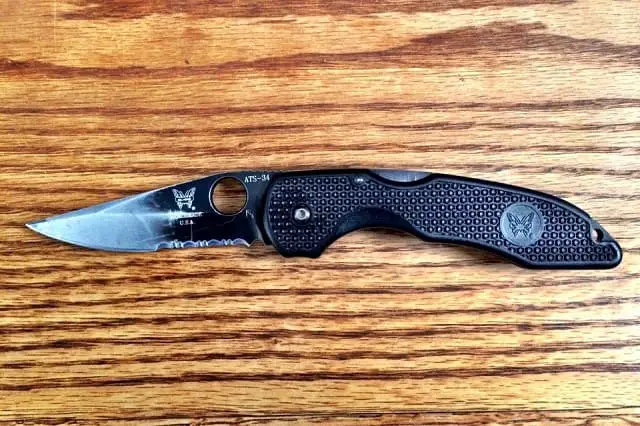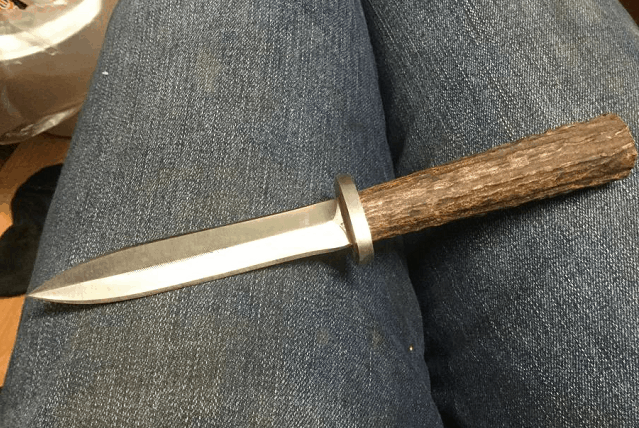(This site is reader-supported. When you buy something using retail links on our articles, we may earn a small commission. As an Amazon Associate I earn from qualifying purchases.)
ATS 34 is Japanese steel for making knives. It is widely known that Japanese steels are great options for different types of knives. It has been around for quite some time and is popular among custom knife manufacturers for its great properties.
What is ATS 34 Steel?
ATS 34 is a high-carbon stainless steel formulated by Hitachi Steel. It is used for making a variety of knives such as custom, kitchen, and EDC knives.
This Japanese steel is almost identical to the American 154CM steel from Crucible in terms of both performance and chemical composition. Both have high carbon as well as chromium contents. 154CM has been often tagged as the benchmark grade for high-end performance in the group of stainless steels. Just as 154CM, ATS-34 is famous among custom knife manufacturers.
Crucible had stopped the production of 154CM once, which was initially introduced for making the blades of jet turbines. Then, Hitachi tried and came up with its version of 154CM, boasting the same characteristics. This steel was named ATS34.
Popular custom knife maker, Bob Loveless used 154CM to make his custom knives. However, later, he started using ATS 34 when 154CM production stopped.
Chemical Composition
- 1.05% Carbon: For improved hardness as well as resistance to wear and corrosion
- 14% Chromium: For improved hardness, toughness, corrosion resistance, and tensile strength
- 4% Molybdenum: For more hardness, hardenability, toughness, and strength
- 0.4% Manganese: For reduced brittleness and higher forgeability and hardenability than usual
- 0.35% Silicon: For improved strength
- 0.03% Phosphorus: For improved hardness, tensile strength, and machinability
- 0.02% Sulfur: For better machinability
Steel Hardness
On the Rockwell scale, ATS 34 knife steel has a rating of 60-61 HRC, which is considered a high level of hardness. The credit for such a high hardness level goes to high carbon content.
Properties
- Decent Toughness: As the hardness level is high, you may think that ATS 34 is less tough and consequently more brittle. However, this is not fully true. Despite the hardness rating of 61 HRC, this steel has decent toughness. This is attributed to molybdenum carbides in the composition. It can easily withstand fair abuse without breaking or chipping. The resistance to breakage makes this steel preferable for very thin blades that are lengthy.
- Great Wear Resistance: In the world of knives, the higher the hardness, the better is the ability to resist wear. Well, as the hardness level of ATS34 steel is high, it has high wear resistance power. This is attributed to more than 1% of carbon and 14% chromium in its chemical composition. Even the extra molybdenum carbides contribute to a high level of wear resistance. You can expect an ATS 34 knife to last long even if you frequently expose it to conditions that can result in wear and tear.
- Great Edge Retention: This is another great property of ATS 34 knives. The steel can take a sharp edge and retain it for a long time. Its edge is not going to get dull easily or instantly, which means you need not worry about sharpening it while performing a task. The credit for this goes to the high carbon content that makes this steel hard enough to keep the edge sharp as well as in good shape for a prolonged period.
- Decent Corrosion Resistance: The 14% chromium content makes this steel stainless. Thus, it can easily resist rust, stain, and corrosion. This is the reason why ATS-34 steel is used for making kitchen and camping knives. However, it is not corrosion-resistant to keep the risk of rusting at bay when amidst saltwater. Indeed, this steel is more susceptible to corrosion than 440C steel, a type of lower-grade steel. That said, you need to take the necessary care of an ATS 34 knife to ensure maximum resistance to corrosion.
- Ease of Sharpening: This property refers to how easy it is to restore a dull edge to a sharp one. As the hardness level of ATS 34 steel is high, sharpening its edge is a bit challenging. However, many harder steels are more difficult to sharpen than this steel. Just ensure that you use the right sharpening stone, and you will not face much problem in sharpening.
Comparison With Other Knife Steel Options
Let’s now compare ATS 34 high-carbon stainless steel with its peers based on hardness, toughness, ease of sharpening, and resistance to corrosion and rust.
ATS 34 vs 440C
Both steels have the same carbon content. However, they differ in terms of chromium-molybdenum balance. ATS 34 gives up the major advantage of chromium by taking in molybdenum. In other words, it is less resistant to corrosion than 440C but is tougher than 440C.
If you need steel with high corrosion resistance, 440C is ideal. On the other hand, if toughness and extreme use are on priority, ATS 34 is ideal. It is also the choice for having a thin blade, as it is less likely to break while under extreme mechanical stress.
ATS 34 vs S30V
S30V comes from the American company, Crucible. It is a premium grade used for making high-end knives. S30V is better at retaining a sharp edge and resisting corrosion than ATS 34. However, ATS 34 is easier to sharpen and is less likely to chip than S30V.
ATS 34 vs VG10
VG10 is quite similar to 154CM and ATS 34. However, VG10 has higher vanadium content, due to which it is tougher and more resistant to corrosion than its Japanese peer. Thus, it is widely used for making kitchen knives. The extra vanadium content also enables VG10 to have a better edge retention ability. However, VG10 is harder to sharpen.
ATS 34 vs D2
While D2 is better at retaining a sharp edge for a long time, ATS 34 is better at resisting rust and taking a sharp edge. Both are hard to sharpen.
So, is ATS 34 Steel Good?
Yes, ATS 34 is a good option for knives. It is equivalent to the popular 154CM. It can hold a sharp edge, fairly tough, and has a balanced performance among other key parameters. You are unlikely to find knives made of this steel from popular manufactures these days due to being expensive and less available compared to the 154CM.

Hi, I am Jay. I am the creator of Knife Guides, your one-stop site for everything related to knives. I am a computer engineer by profession, knife aficionado by passion. Here I work with a group of people who’ve always had a passion for knives and blades. Over the years we’ve kind of become experts and decided to share our knowledge and ideas. I am also an avid hiker and enjoy offshore gamefishing.


